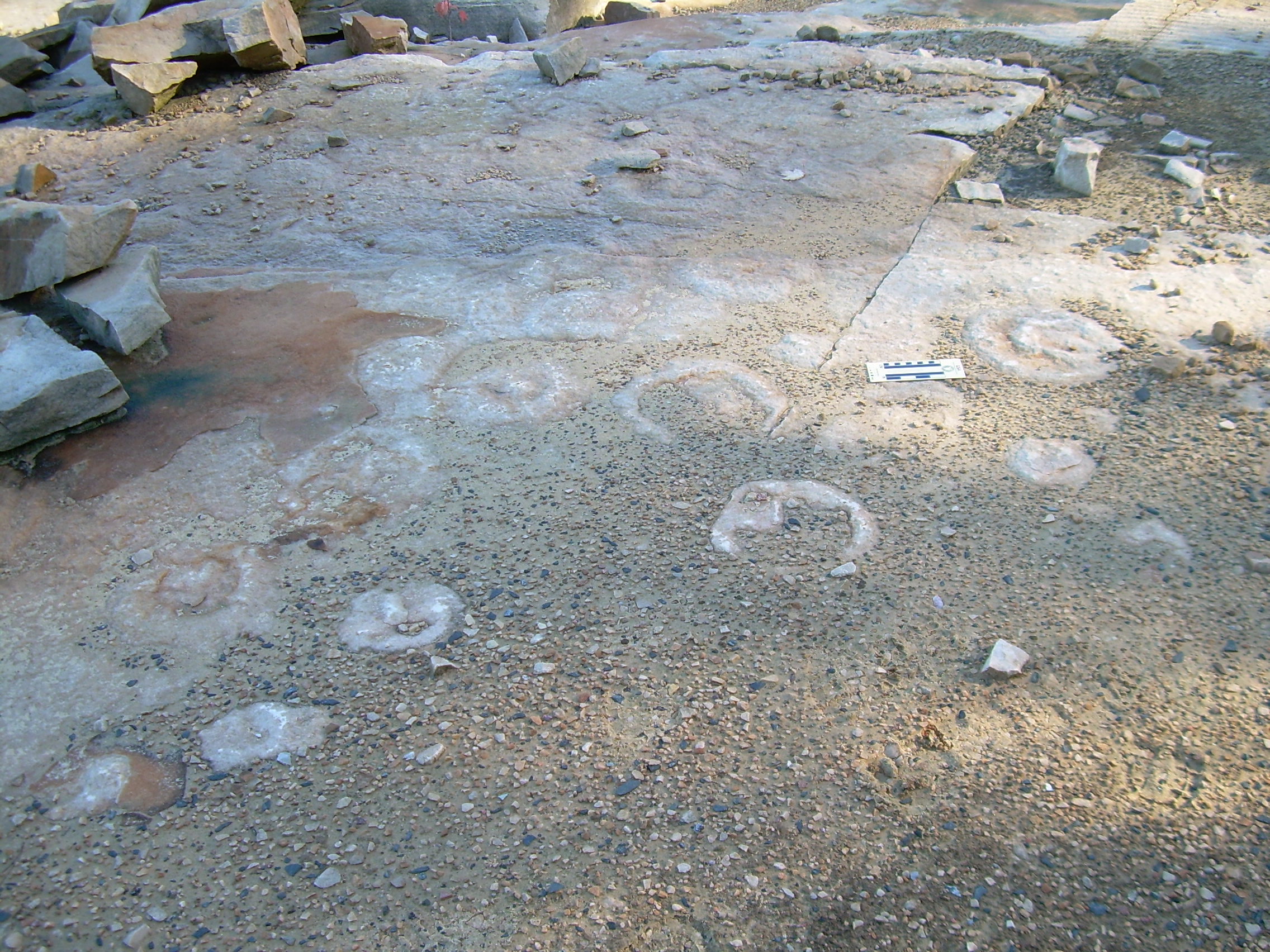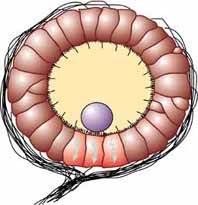|
True Jellyfish
The Scyphozoa are an exclusively marine class of the phylum Cnidaria, referred to as the true jellyfish (or "true jellies"). The class name Scyphozoa comes from the Greek word ''skyphos'' (), denoting a kind of drinking cup and alluding to the cup shape of the organism. Scyphozoans have existed from the earliest Cambrian to the present. Biology Most species of Scyphozoa have two life-history phases, including the planktonic medusa or polyp form, which is most evident in the warm summer months, and an inconspicuous, but longer-lived, bottom-dwelling polyp, which seasonally gives rise to new medusae. Most of the large, often colorful, and conspicuous jellyfish found in coastal waters throughout the world are Scyphozoa. They typically range from in diameter, but the largest species, '' Cyanea capillata'' can reach across. Scyphomedusae are found throughout the world's oceans, from the surface to great depths; no Scyphozoa occur in freshwater (or on land). As medusae, they eat ... [...More Info...] [...Related Items...] OR: [Wikipedia] [Google] [Baidu] |
Cephea Cephea
''Cephea cephea'', also known as the crown jellyfish, or cauliflower jellyfish, is a species of jellyfish in the family Cepheidae. It occurs in the tropical waters of the western Indo-Pacific to Northern Australia. The species was first described by Peter Forsskål in 1775 and originally given the name ''Medusa cephea''. It inhabits the pelagic zone of tropical and sub-tropical waters and is most commonly found in the Indo-West Pacific, eastern Atlantic and the Red Sea. Although this species is among the most venomous jellyfish, it is not harmful to humans and is eaten as a delicacy and used for medical purposes in China and Japan. The species can achieve a diameter of up to 60 cm. Description ''Cephea cephea'' is purplish-blue in color and grow to up to 60 centimeters in diameter. This species has wart-like projections and a bell shape that is associated with the given common names for the species. As in other jellyfish species, the tentacles contain nematocysts that are ... [...More Info...] [...Related Items...] OR: [Wikipedia] [Google] [Baidu] |
Diverticulum
In medicine or biology, a diverticulum is an outpouching of a hollow (or a fluid-filled) structure in the body. Depending upon which layers of the structure are involved, diverticula are described as being either true or false. In medicine, the term usually implies the structure is not normally present, but in embryology, the term is used for some normal structures arising from others, as for instance the thyroid diverticulum, which arises from the tongue. The word comes from Latin ''dīverticulum'', "bypath" or "byway". Classification Diverticula are described as being true or false depending upon the layers involved: *False diverticula (also known as "pseudodiverticula") do not involve muscular layers or adventitia. False diverticula, in the gastrointestinal tract for instance, involve only the submucosa and mucosa. *True diverticula involve all layers of the structure, including muscularis propria and adventitia, such as Meckel's diverticulum. Embryology *The kidne ... [...More Info...] [...Related Items...] OR: [Wikipedia] [Google] [Baidu] |
Aurelia Aurita
''Aurelia aurita'' (also called the common jellyfish, moon jellyfish, moon jelly or saucer jelly) is a species of the genus '' Aurelia''. All species in the genus are very similar, and it is difficult to identify ''Aurelia'' medusae without genetic sampling; most of what follows applies equally to all species of the genus. The most common method used to identify the species consists of selecting a jellyfish from a harbour using a device, usually a drinking glass and then photographing the subject. This means that they can be released in to the harbour shortly afterwards and return to their natural habitat. The jellyfish is almost entirely translucent, usually about in diameter, and can be recognized by its four horseshoe-shaped gonads, easily seen through the top of the bell. It feeds by collecting medusae, plankton, and mollusks with its tentacles, and bringing them into its body for digestion. It is capable of only limited motion, and drifts with the current, even when swimming ... [...More Info...] [...Related Items...] OR: [Wikipedia] [Google] [Baidu] |
Strobilation
Strobilisation or transverse fission is a form of asexual reproduction consisting of the spontaneous transverse segmentation of the body. It is observed in certain cnidarians and helminths. This mode of reproduction is characterized by high offspring output, which, in the case of the parasitic tapeworms, is of great significance. Strobilation in cnidarians *The process starts with preliminary morphological changes. In particular, the cnidarian's tentacles tend to be reabsorbed. *Neck-formation: transverse constrictions appear near the upper extremity of the animal. A strobilating polyp is called a strobila while the non-strobilating polyp is called a scyphistoma or scyphopolyp. *Segmentation: the number of constriction sites increases and migrates down the body length, transforming the body into a sequence of disks. The fissures intensify until the initial body is divided into equally spaced, separate segments. The oral end of the polyp becomes the oral end of the ephyra. *Metamorp ... [...More Info...] [...Related Items...] OR: [Wikipedia] [Google] [Baidu] |
Planula
A planula is the free-swimming, flattened, ciliated, bilaterally symmetric larval form of various cnidarian species and also in some species of Ctenophores. Some groups of Nemerteans also produce larvae that are very similar to the planula, which are called planuliform larva. Development The planula forms either from the fertilized egg of a medusa, as is the case in scyphozoans and some hydrozoans, or from a polyp, as in the case of anthozoans. Depending on the species, the planula either metamorphoses directly into a free-swimming, miniature version of the mobile adult form, or navigates through the water until it reaches a hard substrate (many may prefer specific substrates) where it anchors and grows into a polyp. The miniature-adult types include many open-ocean scyphozoans. The attaching types include all anthozoans with a planula stage, many coastal scyphozoans, and some hydrozoa Hydrozoa (hydrozoans; ) are a taxonomic class of individually very small, predat ... [...More Info...] [...Related Items...] OR: [Wikipedia] [Google] [Baidu] |
Gamete
A gamete (; , ultimately ) is a haploid cell that fuses with another haploid cell during fertilization in organisms that reproduce sexually. Gametes are an organism's reproductive cells, also referred to as sex cells. In species that produce two morphologically distinct types of gametes, and in which each individual produces only one type, a female is any individual that produces the larger type of gamete—called an ovum— and a male produces the smaller type—called a sperm. Sperm cells or spermatozoa are small and motile due to the flagellum, a tail-shaped structure that allows the cell to propel and move. In contrast, each egg cell or ovum is relatively large and non-motile. In short a gamete is an egg cell (female gamete) or a sperm (male gamete). In animals, ova mature in the ovaries of females and sperm develop in the testes of males. During fertilization, a spermatozoon and ovum unite to form a new diploid organism. Gametes carry half the genetic information of ... [...More Info...] [...Related Items...] OR: [Wikipedia] [Google] [Baidu] |
Gonad
A gonad, sex gland, or reproductive gland is a mixed gland that produces the gametes and sex hormones of an organism. Female reproductive cells are egg cells, and male reproductive cells are sperm. The male gonad, the testicle, produces sperm in the form of spermatozoa. The female gonad, the ovary, produces egg cells. Both of these gametes are haploid cells. Some hermaphroditic animals have a type of gonad called an ovotestis. Evolution It is hard to find a common origin for gonads, but gonads most likely evolved independently several times. Regulation The gonads are controlled by luteinizing hormone and follicle-stimulating hormone, produced and secreted by gonadotropes or gonadotrophins in the anterior pituitary gland. This secretion is regulated by gonadotropin-releasing hormone produced in the hypothalamus. Development Gonads start developing as a common primordium (an organ in the earliest stage of development), in the form of genital ridges, which ar ... [...More Info...] [...Related Items...] OR: [Wikipedia] [Google] [Baidu] |
Gonochorists
In biology, gonochorism is a sexual system where there are only two sexes and each individual organism is either male or female. The term gonochorism is usually applied in animal species, the vast majority of which are gonochoric. Gonochorism contrasts with simultaneous hermaphroditism but it may be hard to tell if a species is gonochoric or sequentially hermaphroditic. (e.g. Parrotfish, '' Patella ferruginea''). However, in gonochoric species individuals remain either male or female throughout their lives. Species that reproduce by thelytokous parthenogenesis and do not have males can still be classified as gonochoric. Terminology The term is derived from Greek (''gone'', generation) + (''chorizein,'' to separate). The term gonochorism originally came from German gonochorismus. Gonochorism is also referred to as unisexualism or gonochory. Evolution Gonochorism has evolved independently multiple times and is very evolutionary stable in animals. Its stability and advant ... [...More Info...] [...Related Items...] OR: [Wikipedia] [Google] [Baidu] |
Ocellus
A simple eye (sometimes called a pigment pit) refers to a form of eye or an optical arrangement composed of a single lens and without an elaborate retina such as occurs in most vertebrates. In this sense "simple eye" is distinct from a multi-lensed "compound eye", and is not necessarily at all simple in the usual sense of the word. The structure of an animal's eye is determined by the environment in which it lives, and the behavioural tasks it must fulfill to survive. Arthropods differ widely in the habitats in which they live, as well as their visual requirements for finding food or conspecifics, and avoiding predators. Consequently, an enormous variety of eye types are found in arthropods. They possess a wide variety of novel solutions to overcome visual problems or limitations. Use of the term ''simple eye'' is flexible, and must be interpreted in proper context; for example, the eyes of humans and of other large animals such as most cephalopods, are '' camera eyes'' and i ... [...More Info...] [...Related Items...] OR: [Wikipedia] [Google] [Baidu] |
Statocyst
The statocyst is a balance sensory receptor present in some aquatic invertebrates, including bivalves, cnidarians, ctenophorans, echinoderms, cephalopods, and crustaceans. A similar structure is also found in ''Xenoturbella''. The statocyst consists of a sac-like structure containing a mineralised mass (statolith) and numerous innervated sensory hairs (setae). The statolith's inertia causes it to push against the setae when the animal accelerates. Deflection of setae by the statolith in response to gravity activates neurons, providing feedback to the animal on change in orientation and allowing balance to be maintained. In other words, the statolith shifts as the animal moves. Any movement large enough to throw the organism off balance causes the statolith to brush against tiny bristles which in turn send a message to the brain to correct its balance. It may have been present in the common ancestor of cnidarians and bilaterians. Hearing In cephalopods like squids, statocysts ... [...More Info...] [...Related Items...] OR: [Wikipedia] [Google] [Baidu] |






